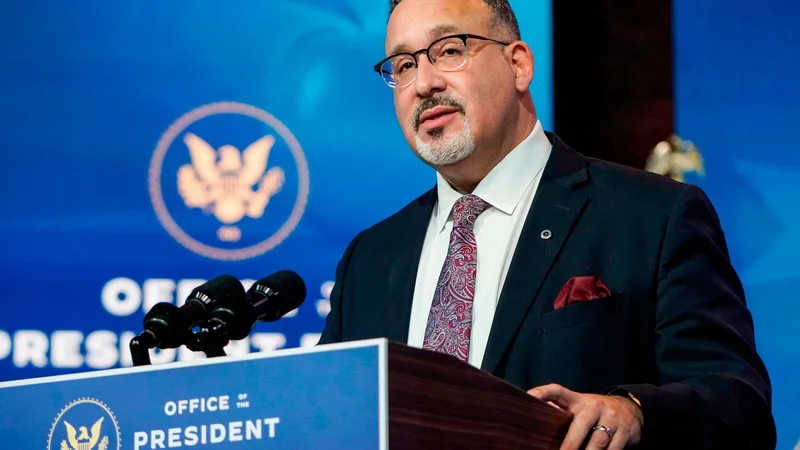The Department of Education has finalized its student loan reforms under the One Big Beautiful Bill Act (OBBBA), aiming to simplify repayment, cap borrowing, and hold institutions accountable. Under Secretary of Education Nicholas Kent boldly claims these reforms will "help drive a sea change in higher education." But let’s dive into the data and see if this is a genuine transformation or just a fresh coat of paint on a fundamentally flawed system.
Digging into the Details
The RISE (Reimagining and Improving Student Education) Committee, after deliberations in September and November 2025, has put forward some significant changes. The elimination of the Grad PLUS program is noteworthy, as is the capping of Parent PLUS Loans. The streamlined Repayment Assistance Plan (RAP) replacing previous options sounds good on paper, but the devil is always in the details. What exactly constitutes “assistance” and how many hoops will borrowers need to jump through?
The new loan limits for graduate students—$20,500 per year with a lifetime maximum of $100,000—and professional students—$50,000 annually and $200,000 total—are perhaps the most concrete changes. These caps directly address the issue of runaway student debt, particularly in fields like law and medicine where six-figure debt loads have become the norm. But will these caps be enough to truly curb tuition inflation, or will universities simply find other ways to extract value from students? I've seen this happen before, where regulation in one area leads to creative accounting in another.
The Department of Education will draft a Notice of Proposed Rulemaking (NPRM) for publication in the Federal Register, inviting further public comment. A virtual public hearing was held on August 7, 2025, to collect feedback. This public engagement is mandated under Section 492 of the Higher Education Act, but the real question is: how much will this feedback actually influence the final rules? These hearings often feel more like a formality than a genuine effort to incorporate diverse perspectives.
The Accountability Question
Kent's statement about holding universities accountable is the key here. The reforms aim to do this, but how? What specific metrics will be used to measure outcomes? What are the penalties for institutions that consistently fail to prepare their students for successful careers? The fact sheet doesn't offer specifics. This is where the "sea change" narrative starts to feel a bit thin.
The historical context is important. These reforms are the second round of negotiating proceedings under the Trump Administration to streamline postsecondary education policies. The first round didn’t exactly set the world on fire, so skepticism is warranted. Decades of complexity and inefficiency in the federal student loan system won’t be undone overnight, or even in a single presidential term.

Consider the streamlining of the Repayment Assistance Plan (RAP). This sounds promising, but the previous repayment options were already complex and confusing. Simplifying them is a necessary step, but it doesn’t address the fundamental problem: the cost of higher education is too damn high. Capping loans is like treating the symptom (debt) rather than the disease (skyrocketing tuition).
I’ve looked at hundreds of these types of policy announcements. The language is always optimistic, the goals are always ambitious, and the actual impact is often far less dramatic than promised.
The RISE Committee reviewed 17 regulatory provisions, including revisions to the RAP and the definition of a professional student. But what were the specific revisions? How will the definition of a professional student be changed, and what impact will that have on different fields of study? Details on these key provisions remain scarce, which makes it difficult to assess the true scope of the reforms.
The new loan limits for professional students are interesting. Capped at $50,000 annually and $200,000 total, this will undoubtedly impact fields like law and medicine. But here's the rub: will this lead to a decrease in tuition prices, or will it simply shift the burden onto students who will now have to seek alternative funding sources, potentially from private lenders with even less favorable terms?
A Band-Aid on a Broken System?
The reforms under the OBBBA are a step in the right direction, but they don’t address the fundamental problem of unsustainable tuition costs. Capping loans and simplifying repayment plans are helpful measures, but they won’t solve the underlying issue. Unless we tackle the root causes of tuition inflation, we’ll just be rearranging deck chairs on the Titanic.
The key question that remains unanswered is: will these reforms actually hold universities accountable for outcomes? Or will they simply lead to creative accounting and new ways to extract value from students? Only time will tell, but my initial assessment is cautiously pessimistic.
So, What's the Real Story?
These reforms are more of a tactical adjustment than a strategic overhaul. They’ll provide some relief to borrowers, but they won’t fundamentally change the broken economics of higher education. The "sea change" Kent speaks of? More like a ripple in a pond.
